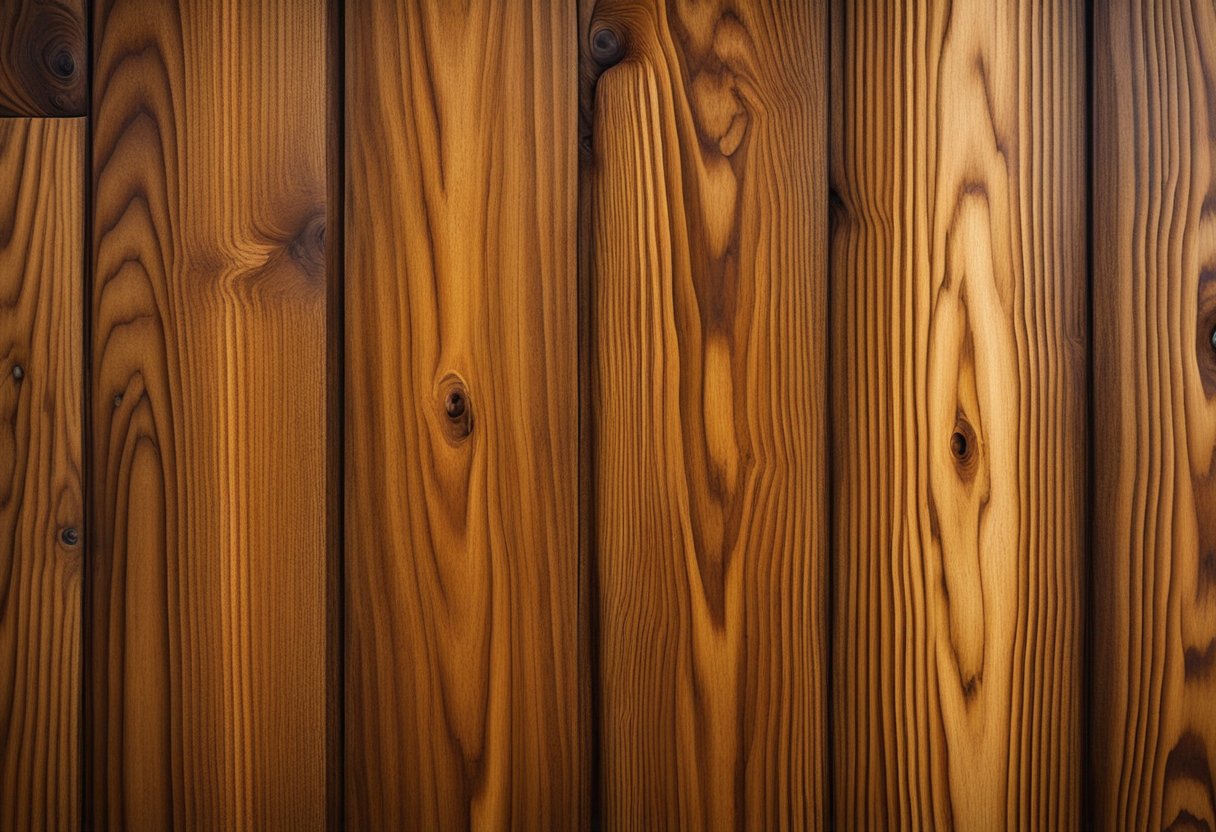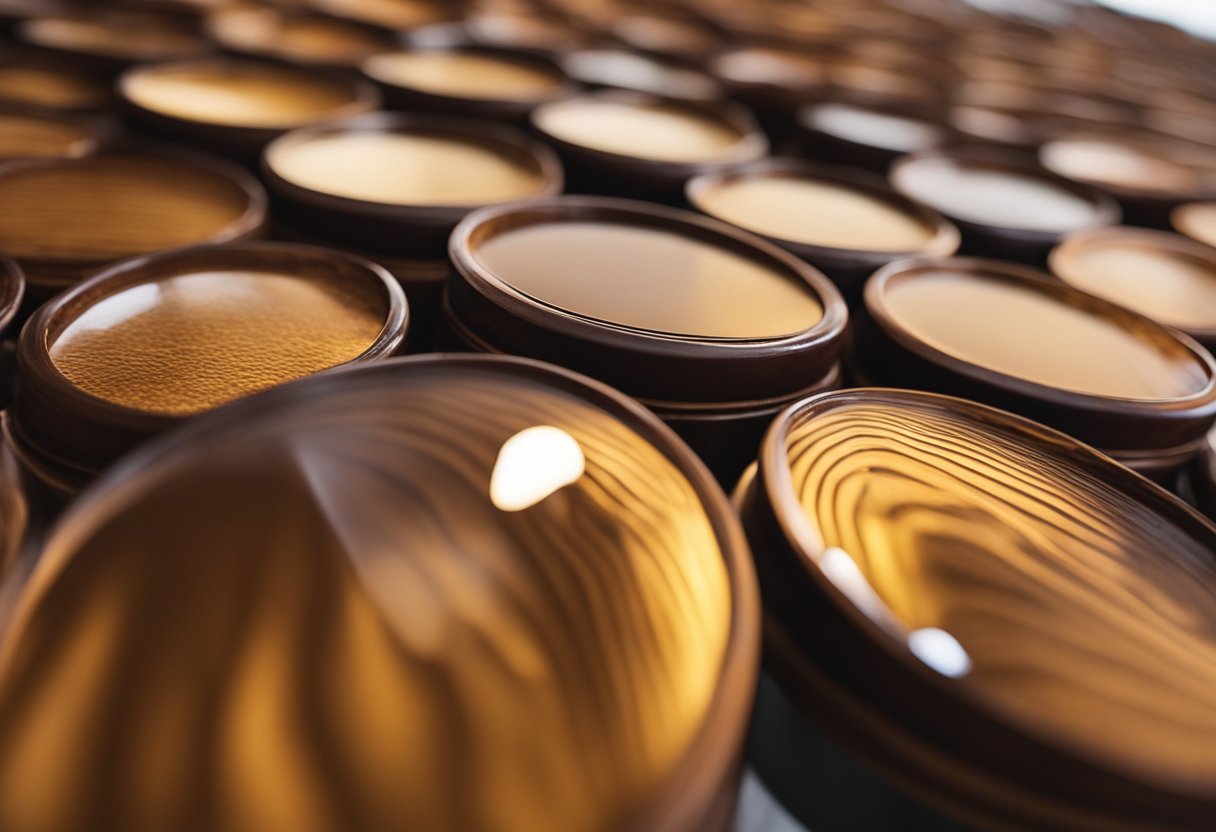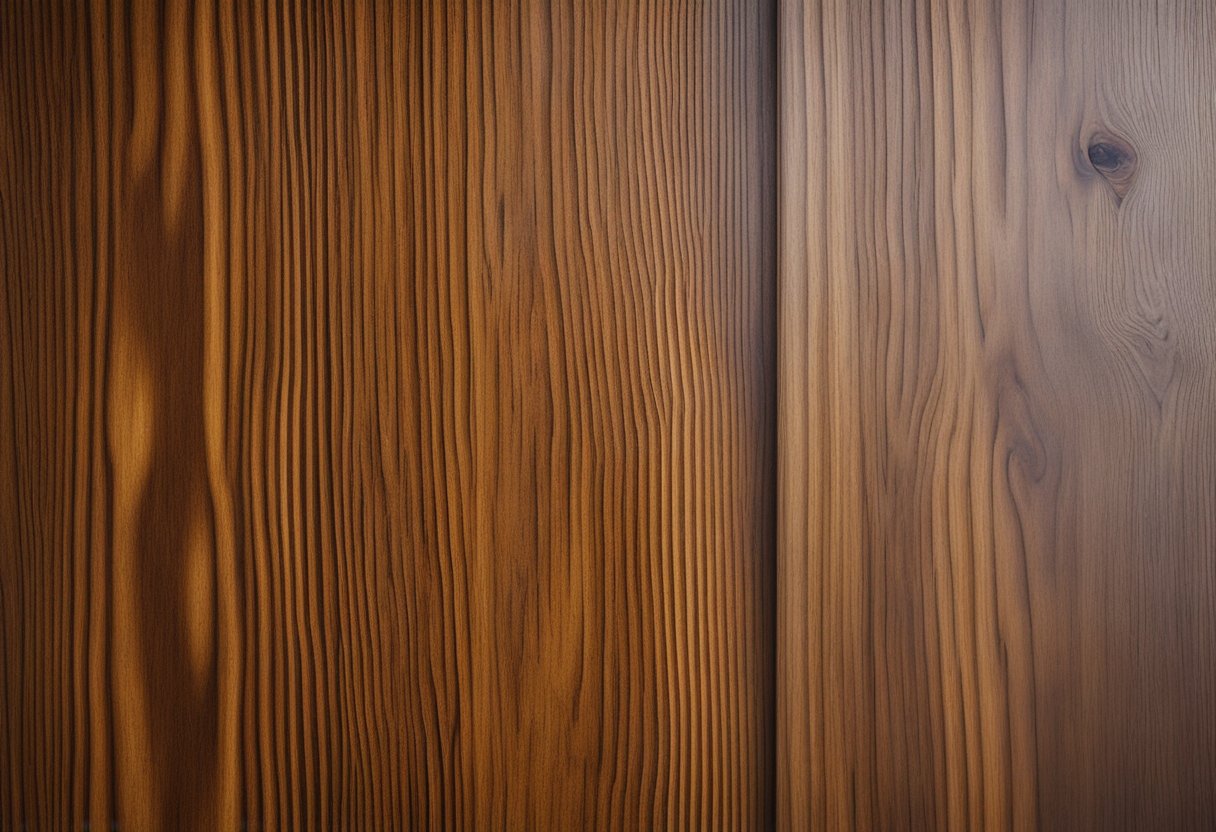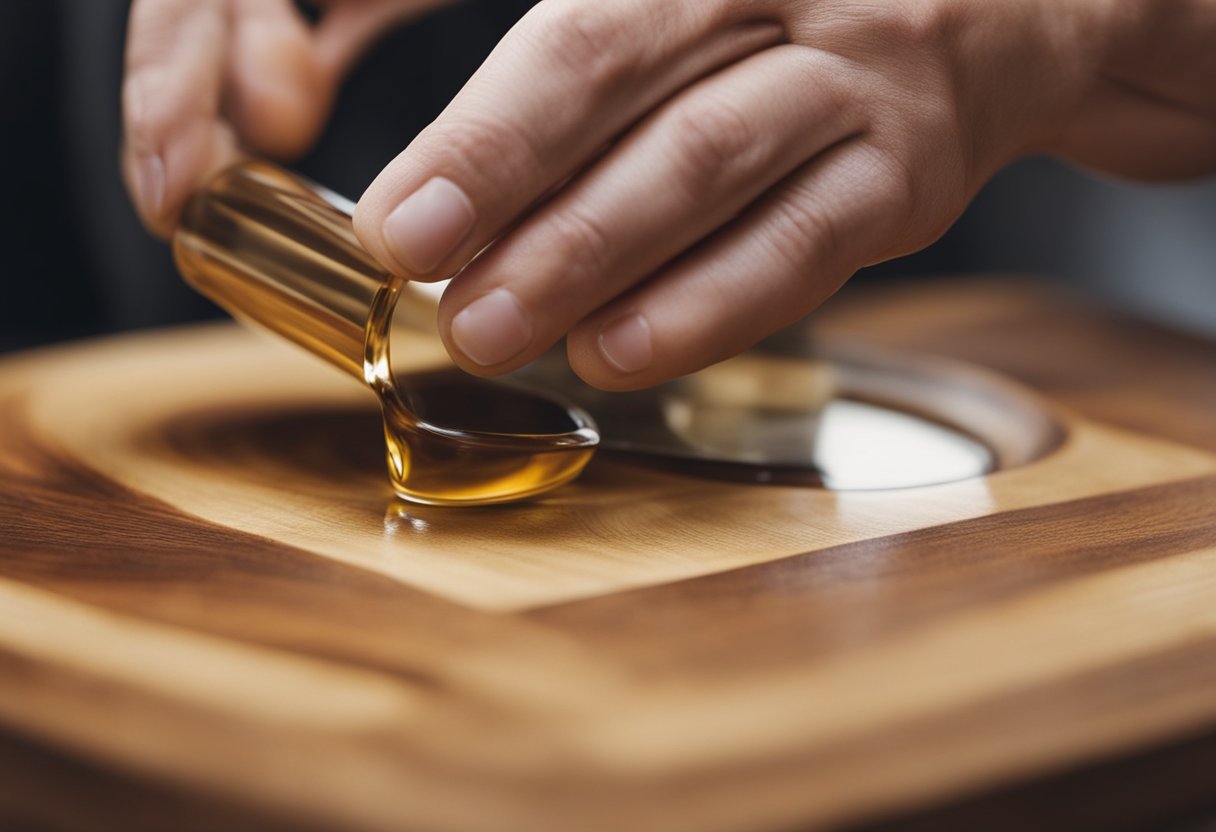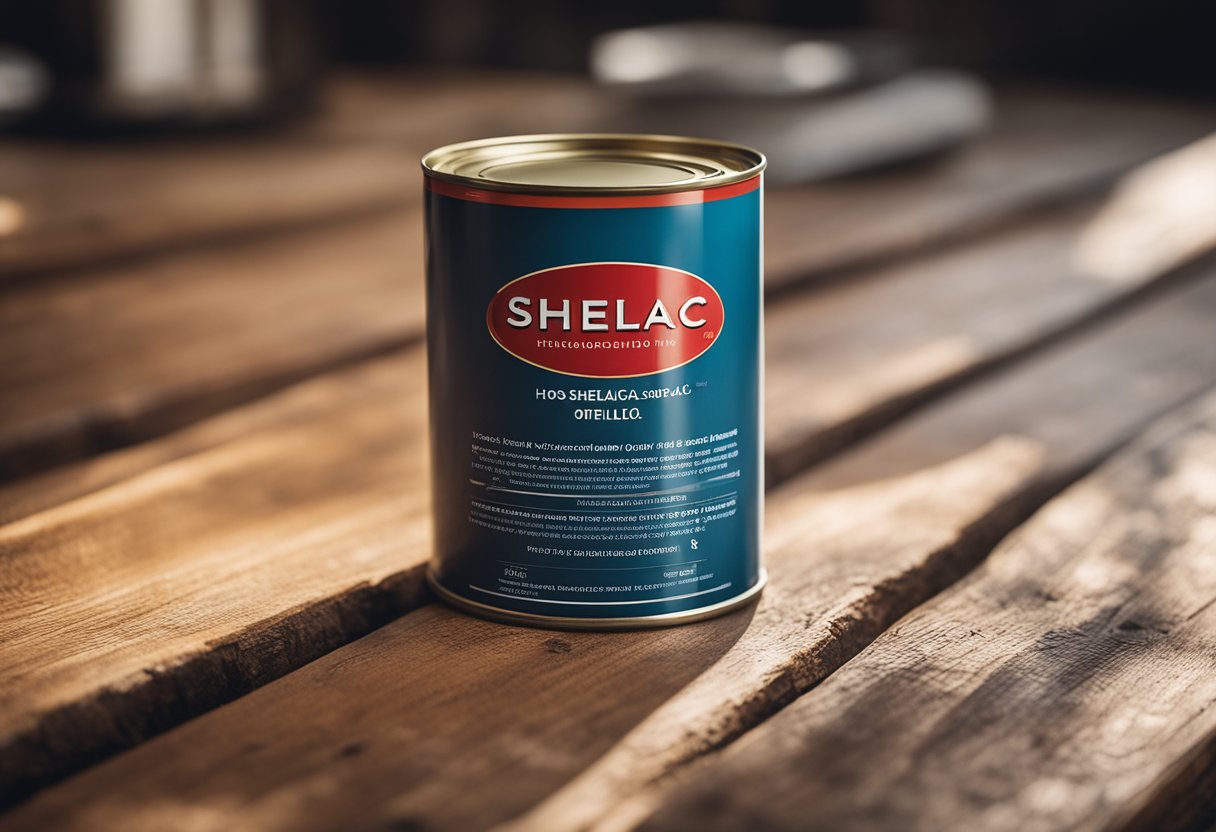I have researched the topic of shellac over Danish oil and found that it is a common finishing technique used by woodworkers to enhance the durability and appearance of their projects. Danish oil is a penetrating oil that is used to protect and enhance the natural beauty of wood, while shellac is a film-forming finish that provides a protective layer on top of the wood. When used together, they create a beautiful and durable finish that can withstand the test of time.
Understanding Danish Oil and Shellac
Danish oil is a popular choice among woodworkers because it is easy to apply and penetrates deeply into the wood, enhancing its natural beauty. Shellac, on the other hand, is a versatile finish that can be used as a sealer, primer, or topcoat. It is also easy to apply and dries quickly, making it a popular choice for woodworkers who want to achieve a beautiful and durable finish in a short amount of time.
Application Process
To apply shellac over Danish oil, the Danish oil must first be allowed to dry and cure completely. This usually takes several days, depending on the temperature and humidity of the environment. Once the Danish oil has cured, shellac can be applied using a brush or spray gun. Multiple coats may be required to achieve the desired level of protection and shine.
Key Takeaways
- Shellac over Danish oil is a popular finishing technique used by woodworkers to enhance the durability and appearance of their projects.
- Danish oil is a penetrating oil that enhances the natural beauty of wood, while shellac is a film-forming finish that provides a protective layer on top of the wood.
- When applying shellac over Danish oil, it is important to allow the Danish oil to dry and cure completely before applying the shellac.
Understanding Danish Oil and Shellac
https://www.youtube.com/watch?v=nG924XrwaA8&embed=true
Basics of Danish Oil
Danish oil is a popular wood finish that is a mixture of drying oil, varnish, and mineral spirits. It is a type of oil finish that is easy to apply and dries quickly. Danish oil penetrates the wood and provides a protective layer that enhances the natural beauty of the wood. It is a popular choice for finishing furniture, flooring, and other wooden objects.
Danish oil is a type of oil finish that is different from other oil finishes. It is a drying oil, which means that it dries through a process of oxidation. This process can take several days, depending on the humidity and temperature of the environment. After the oil has dried, it cures, which means that it hardens and forms a protective layer.
Insights into Shellac
Shellac is a resin that is secreted by the lac bug found in India and Thailand. It is a versatile wood finish that has been used for centuries. Shellac is available in different forms, including waxed shellac and dewaxed shellac. Waxed shellac is not suitable for use as a sealer or finish, as it is difficult to get a good adhesion. Dewaxed shellac is a better choice for use as a sealer or finish, as it has better adhesion.
Shellac is a popular choice for finishing wood because it dries quickly and provides a hard, durable finish. It is a good choice for finishing furniture, cabinets, and other wooden objects. Shellac is also used as a sealer for wood that is to be painted or stained.
Conclusion
In conclusion, Danish oil and shellac are two popular wood finishes that are used for different purposes. Danish oil is a drying oil that provides a protective layer that enhances the natural beauty of the wood. Shellac is a resin that dries quickly and provides a hard, durable finish. When using shellac over danish oil, it is important to use dewaxed shellac to ensure good adhesion.
Application Process
https://www.youtube.com/watch?v=nFKX26PyCEs&embed=true
Applying Danish Oil
When applying Danish oil, it is important to prepare the wood surface properly. Sand the wood with 220-grit sandpaper, then wipe the surface clean with a tack cloth. This helps to remove any dust or debris that could interfere with the application.
Next, apply the Danish oil with a brush or a clean, lint-free cloth. Apply the oil in the direction of the grain, and work in small sections to avoid missing any spots. Allow the oil to soak into the wood for about 15 minutes, then wipe off any excess with a clean cloth. Repeat this process until you achieve the desired level of color and sheen.
Danish oil can be used as a stain and sealer in one product, and it enhances the natural grain pattern of the wood. It is important to note that Danish oil is not a film finish, and it does not provide a high level of protection against water or scratches. Therefore, it is recommended to apply a topcoat over the Danish oil, such as shellac or polyurethane.
Applying Shellac
Shellac is a versatile and easy-to-use finish that can be applied over Danish oil. Before applying shellac, make sure that the Danish oil is fully cured. This can take up to a week, depending on the humidity and temperature.
To apply shellac, use a clean brush or a lint-free cloth. Apply the shellac in thin, even coats, and work in small sections to avoid missing any spots. Allow the shellac to dry for about 30 minutes, then lightly sand the surface with 320-grit sandpaper to remove any imperfections. Repeat this process until you achieve the desired level of sheen.
Shellac is a film finish that provides a high level of protection against water and scratches. It can be applied using the French polish technique, which involves applying multiple thin coats of shellac using a pad made of cotton or wool. This technique requires some practice and skill, but it can produce a beautiful and durable finish.
In conclusion, applying Danish oil and shellac requires some preparation and attention to detail. By following these steps, you can achieve a beautiful and durable finish that enhances the natural beauty of the wood.
Drying and Curing
As someone who has worked with both Danish oil and shellac, I know that drying and curing are two important processes that need to be considered when applying these finishes.
Drying of Danish Oil
Danish oil is a drying oil, which means it dries by reacting with oxygen in the air. The drying process can take anywhere from a few hours to a few days, depending on the temperature and humidity of the room. It is important to note that drying is not the same as curing.
Curing of Shellac
Shellac, on the other hand, is a resin that needs to be dissolved in alcohol before it can be applied. Once applied, the alcohol evaporates and the shellac begins to cure. Curing is a process that takes time and involves the hardening of the finish.
When it comes to applying shellac over Danish oil, it is important to make sure that the Danish oil is completely dry before applying the shellac. If the Danish oil is still tacky or not completely dry, the shellac may not adhere properly and could result in a poor finish.
In summary, understanding the drying and curing processes of both Danish oil and shellac is important when applying these finishes. Danish oil needs to be completely dry before applying shellac, and shellac needs time to cure to achieve a hard, durable finish.
Durability and Maintenance
Durability of Danish Oil
Danish oil is a popular choice for finishing wood due to its durability and ease of application. It penetrates deep into the wood fibers, providing a protective layer that enhances the natural beauty of the wood. However, Danish oil is not as durable as some other finishes, such as polyurethane or lacquer. It can scratch easily, and it may not hold up well to heavy use.
One way to increase the durability of Danish oil is to apply a topcoat of shellac. Shellac is a hard, protective finish that can help to protect the underlying Danish oil. It can also add a glossy or matte sheen to the wood, depending on the type of shellac used.
Maintenance of Shellac
Shellac is a relatively low-maintenance finish, but it does require some upkeep to keep it looking its best. One of the benefits of shellac is that it can be easily repaired if it becomes scratched or damaged. Simply apply a fresh coat of shellac to the affected area, and the scratch or damage should disappear.
Another benefit of shellac is that it can be easily cleaned with a damp cloth. However, it is important to avoid using harsh chemicals or abrasive cleaners on shellac, as they can damage the finish. Instead, use a mild soap and water solution to clean the surface of the wood.
It is also important to note that shellac can be affected by changes in humidity and temperature. As the wood expands and contracts due to changes in moisture levels, the shellac may crack or peel. This is a natural occurrence, and it is not a sign of a defect in the finish. To minimize the risk of this happening, it is important to store the wood in a stable environment and to avoid exposing it to extreme temperatures or humidity levels.
In conclusion, by applying a topcoat of shellac over Danish oil, you can enhance the durability and beauty of your wood finish. However, it is important to keep in mind that shellac requires some maintenance to keep it looking its best. By following these simple tips, you can ensure that your shellac finish lasts for years to come.
Special Techniques
https://www.youtube.com/watch?v=RQ-FEtA0TKU&embed=true
Danish Oil on Different Woods
When it comes to using Danish oil on different woods, it is essential to understand that the oil will react differently with each type of wood. For instance, hairline cracks may appear on walnut wood if Danish oil is used on it. Therefore, it is important to test the oil on a small area first before applying it on the entire surface.
On the other hand, maple, oak, and birch are hardwoods that can be finished with Danish oil without any issues. However, it is important to note that the oil may darken the wood slightly. Therefore, it is recommended to apply a clear finish over the Danish oil to protect the wood and maintain its natural color.
Shellac Finishing Tricks
Shellac is a versatile finish that can be used on a variety of surfaces, including wood, metal, and plastic. Here are some tricks to help you achieve a perfect shellac finish:
-
French polishing: This is a technique that involves applying multiple thin coats of shellac using a pad made of cotton wool or a lint-free cloth. The pad is dipped in shellac and then rubbed in a circular motion on the surface. French polishing creates a smooth, glossy finish that is highly durable.
-
Brushing: Shellac can also be applied using a brush. However, it is important to use a high-quality brush with natural bristles to avoid leaving brush marks. Brushing is a good option for larger surfaces that require a quick application.
-
Dewaxed shellac: When using shellac as a sealer over Danish oil, it is important to use dewaxed shellac. This is because waxed shellac may not adhere properly to the oil, resulting in a poor finish. Dewaxed shellac can be applied using a padding technique, which involves using a soft cloth to wipe on the shellac in a brushing motion.
Overall, Danish oil and shellac are two finishes that work well together to create a beautiful, durable finish on wood surfaces. By following the above techniques and experimenting on a small area first, you can achieve a perfect finish every time.
Safety Measures
When working with finishing products like Danish oil and shellac, it is important to take proper safety measures to protect yourself and others from potential hazards. Here are some guidelines to follow when handling these products:
Handling Danish Oil
Danish oil is a type of wiping varnish that contains a blend of oil and varnish. It is important to read the label and follow the manufacturer’s instructions carefully. Some general safety measures to keep in mind include:
- Wear gloves and protective eyewear when handling Danish oil.
- Ensure that the work area is well-ventilated to avoid inhaling fumes.
- Keep the product away from heat sources and open flames.
- Store the product in a cool, dry place away from direct sunlight.
Danish oil contains solvents like mineral spirits or paint thinner. These solvents can be harmful if ingested or inhaled. If you accidentally ingest or inhale Danish oil, seek medical attention immediately.
Dealing with Shellac
Shellac is a natural resin that is dissolved in alcohol to create a finish. It is important to take proper safety measures when handling shellac to avoid potential hazards. Here are some guidelines to follow:
- Wear gloves and protective eyewear when handling shellac.
- Ensure that the work area is well-ventilated to avoid inhaling fumes.
- Keep the product away from heat sources and open flames.
- Store the product in a cool, dry place away from direct sunlight.
Shellac contains alcohol as a solvent. Alcohol is highly flammable and can cause skin irritation. If you accidentally ingest or inhale shellac, seek medical attention immediately.
When working with both Danish oil and shellac, it is important to keep in mind that these products can be highly flammable. Avoid smoking or using open flames in the work area. Keep a fire extinguisher nearby in case of an emergency.
By following these safety measures, you can ensure that your finishing project goes smoothly and safely.
Frequently Asked Questions
Can you apply shellac over Danish oil?
Yes, you can apply shellac over Danish oil. Shellac is a versatile finish that can be used as a sealer, protective coat, or topcoat over Danish oil. However, there are some things to keep in mind when applying shellac over Danish oil, such as the compatibility of the two finishes and the drying time of each finish.
What finish is suitable to apply over Danish oil?
Shellac is a suitable finish to apply over Danish oil. Other finishes that can be applied over Danish oil include lacquer, polyurethane, and varnish. However, each finish has its own characteristics and may require different preparation and application methods.
Is shellac compatible with oil finishes?
Yes, shellac is compatible with oil finishes. However, it is important to use dewaxed shellac when applying it over an oil-based finish, such as Danish oil. Dewaxed shellac does not contain the wax that can interfere with the adhesion of other finishes.
What are the best practices for using shellac over Danish oil?
The best practices for using shellac over Danish oil include ensuring that the Danish oil is completely dry before applying shellac, sanding the surface lightly with fine-grit sandpaper before applying shellac, and applying thin coats of shellac with a good quality brush. It is also important to allow each coat of shellac to dry completely before applying the next coat.
Are there any disadvantages to applying shellac over Danish oil?
One disadvantage of applying shellac over Danish oil is that it may slightly alter the color of the wood. Shellac has a slight amber tint that can darken the color of the wood. However, this may not be noticeable on darker woods or when using a clear shellac.
Can you apply polyurethane or lacquer over Danish oil?
Yes, you can apply polyurethane or lacquer over Danish oil. However, it is important to ensure that the Danish oil is completely dry before applying these finishes. It is also important to follow the manufacturer’s instructions for preparation and application of the finish.

Hi, I’m Sal Muller of Tooltrip.com. My DIY experience led me to understand essential power tools for home projects. Tooltrip.com guides enthusiasts and professionals in choosing right tools for any job. I provide concise top tool reviews for easier, efficient DIY.

